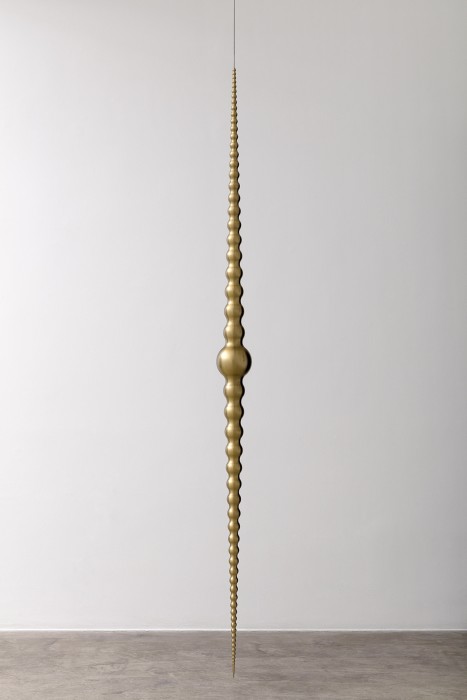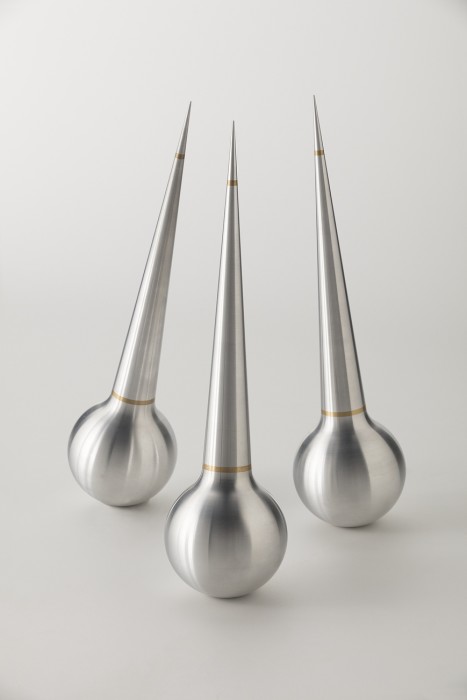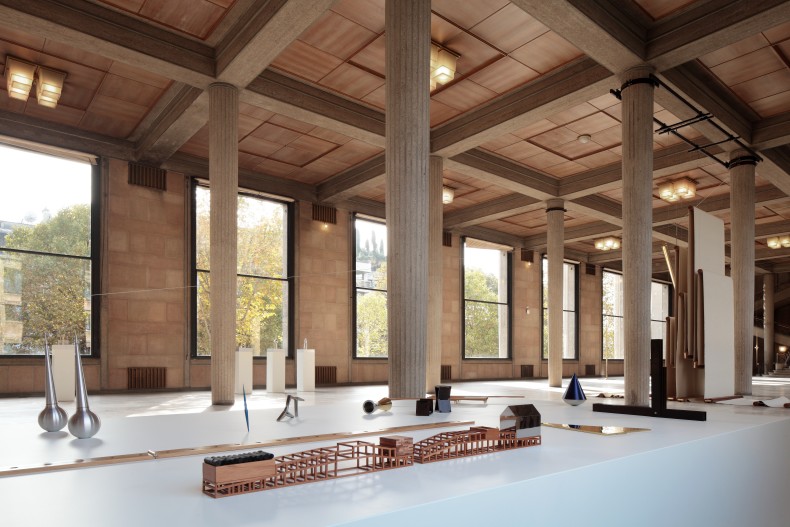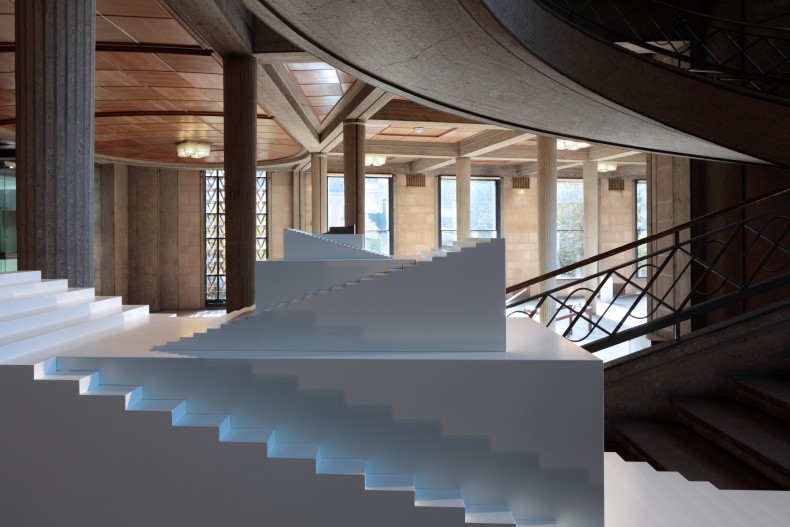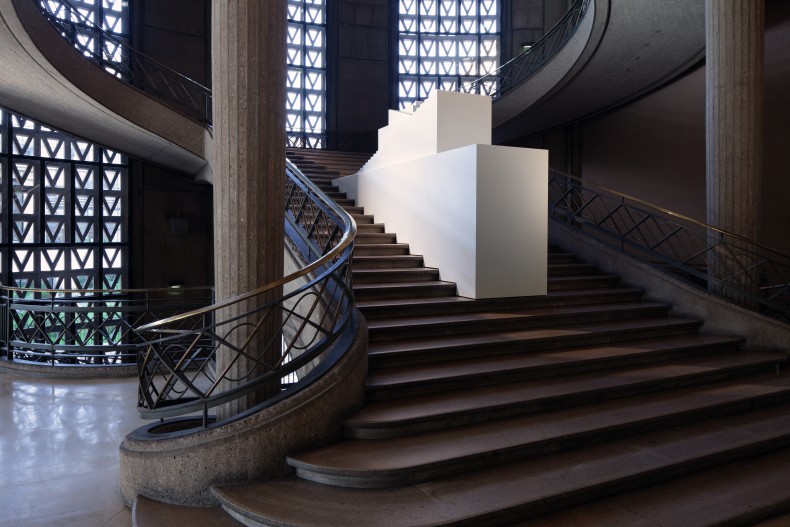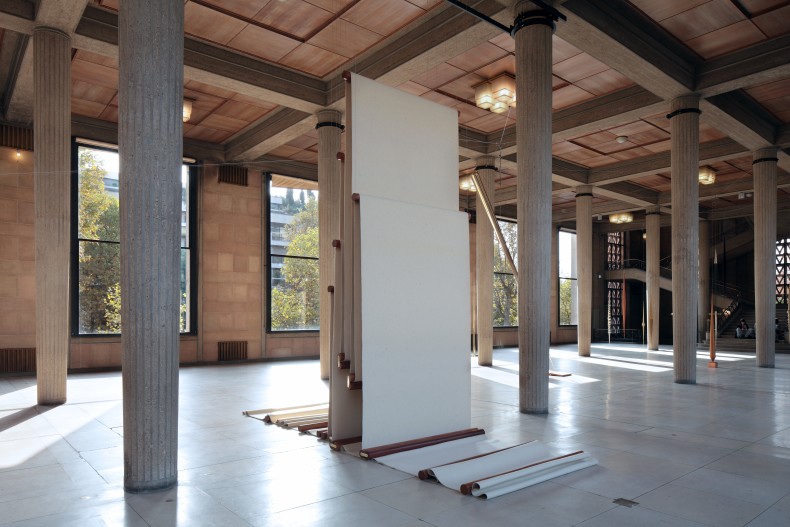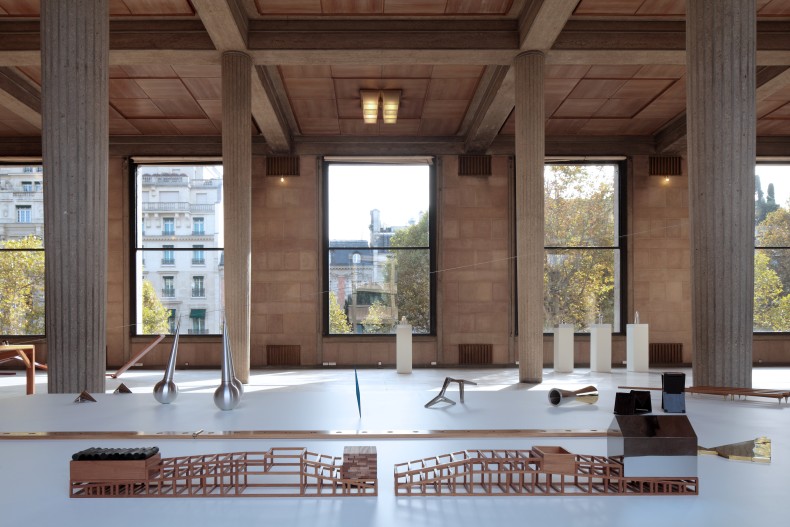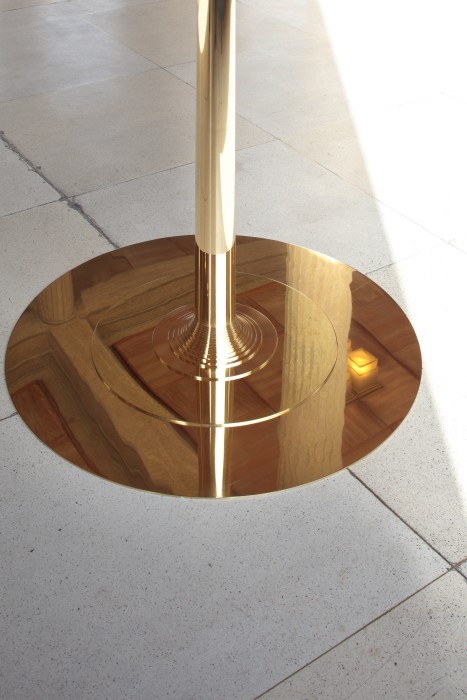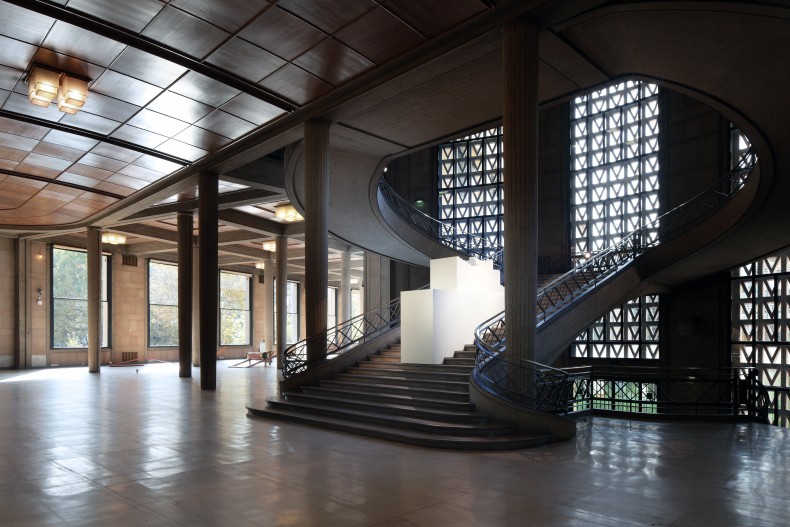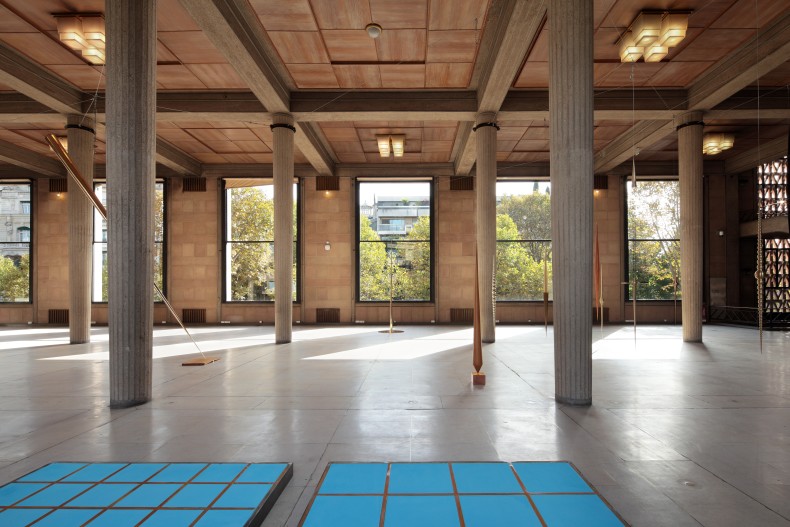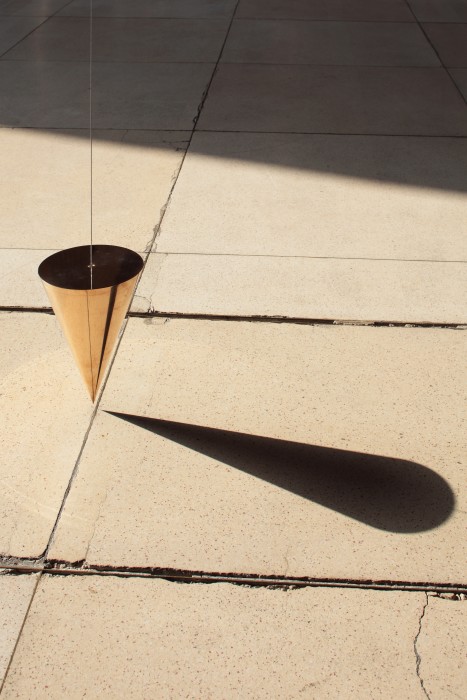With the support of the French Ministry of Culture and the Galeria Nara Roesler, Artur Lescher presents Porticus, his first solo exhibition in France, at Palais d'Iéna in Paris from October 16th to 25th. Curated by Matthieu Poirier, Curator and Art Historian with a PhD from Université Paris-Sorbonne, the exhibition will display a set of works, including sculptures and installations, most of them especially created for the show. Palais d'Iéna, which had already presented artists such as Antony Gormley, Francesco Vezzoli and Carlos Cruz-Diez, will be now the stage for artworks that offer a transversal view of Lescher's production and propose a dialogue with Gustave Perret's building in terms of the geometric precision and the sophistication of the classic-modern architecture. The building was inaugurated in 1939 and is now the headquarters of the Economic and Social Council (EESC).
about
porticus
porticusAs part of FIAC's parallel exhibitions program, Palais d'léna and the Conseil Économique, Social Environnemental (CESE) are pleased to present Porticus, the first solo show of Brazilian artist Arthur Lescher in France. Following last year's program, which included Antony Gormley, Francesco Vezzoli and Carlos-Cruz Diez, the exhibition will run for ten days, through October 25th.
Lescher's in situ works have been brought specifically for the event from private and public Brazilian collections and others have been commissioned especially for the event. Presented throughout Palais d'léna's monumental 17,000 sq2, the sculptures offer an unprecedented dialogue with the modern classicism of the spaces designed by the architect Auguste Perret in the 1930s. The exhibition is sponsored by the Ministry of Cultural Affairs and supported by Galeria Nara Roesler.
Artur Lescher has enjoyed considerable recognition across the Atlantic since the 1980s, notably for his attachment to neo-concretism, a major current of abstract art that draws on cognitivism and the phenomenology of perception. This exhibition offers a transversal view of Lescher's oeuvre and highlights its relation to certain characteristics of Auguste Perret's distinguished building, originally inaugurated 1939, which now serves as the headquarters of the Economic, Social and Environmental Council (CESE). The works dialogue with Perret's unique and imposing architectural style: the powerful colonnade of the hypostyle hall, the hemicycle, and the staircase. Lescher's sculptures diffuse the lines of the interior spaces, propelling them massively in scale and developing openness, articulacy and an individual indoor/outdoor flow throughout the building. By harking back in this way to the initial model of the classical "Porticus" and its democratic aspect, the artist symbolically opens the place up to the outside world, and in a more intimate level, to the perceptual mechanics of viewers.
Artur Lescher's sculptural work is, in fact, intrinsically connected to architectural spaces. In the this case, it dialogues with a building of remarkable sobriety, but which nonetheless could not be further from the neutral, white-cube setting in which works are routinely exhibited by museums, galleries and art centers. Indeed, the style of the Belgian-French architect is characterized by his use of unrefined, that is to say unadorned or unpainted, materials-such as process-dyed reinforced concrete in various shades of pink. This provides a wide range of textural effects for the eye or the hand, to say nothing of the different metals used for joints, edges, borders and strips. The works of the Brazilian artist act as a powerful echo of these qualities, with their regular shapes, reflective surfaces and the precisely calculated way they are met with measuring instruments such as rulers, plumb lines or styluses. The crucial role played by these elements goes beyond providing a sophisticated drawing or mere ornament: they shape, structure, rhythm and modulate the overall power of the site, with its rigorous geometry and massive blocks.
Palais d'Iéna-whose powerful geometry prompted Emmanuel de Thubert in 1939 to say "this is where duration is", should accommodate the subtle mechanical equilibrium of Artur Lescher's works; like, for example, his Pendulums, which evoke instruments that purportedly reveal magnetic sources or hypnotize a subject. Their elongated symmetry and overhead suspension have the effect of modulating the surrounding space, and inscribing their geometry on that of the place. For the artist, it is a matter of bringing out the materials' relation to the space and, in so doing, exposing their intrinsic properties and uncovering their meaning. For, while the artist rejects any figurative or representational intent in his practice, he conceives of his works as "capsules laden with attributes"-like those of the many works made of metal, which give off reflections and undulations like light on water. Or the way the works are hung, which is conceived of as a landscape of events, constantly renewed as viewers walk around and change the angle of our gaze.
About Artur Lescher
Artur Lescher (b.1962, São Paulo, Brazil) lives and works in São Paulo. Lecher's work showcases the tangible qualities of objects and their interaction with architecture. His preference for one-piece volumes, suspended and subjected to the force of gravity creates a unique tension between the proportions of the space and the object. At the core of all his work is a focus on perceived boundaries, between for example, reality and its representation. This is further intensified by the use of materials such as metal, stone, wood, brass and copper, which have been removed from their usual functions and rearranged as a product of the artist's vision. In addition, Lescher's work is strongly linked to industrial processes, reaching extreme refinement and rigor, His production's purpose goes beyond form and opens space for myth and the imagination. Lescher gained recognition after participating in the 19th Bienal de São Paulo (1987). He was also featured in the 2002 edition of the Biennial and the 2005 Mercosul Biennial. One of the leading figures in Brazilian abstract art, Lescher has featured solo exhibitions in Latin America, Europe and the United States including two exhibitions at the Tomie Ohtake Institute in São Paulo (2006) and, more recently, at the Palais d'éna in Paris (2017).
About the Conseil Economique Social et Environnemental
The Conseil Economique Social et Enviornmental (CESE) is a constitutional consultative assembly. It represents key economic, social and environmental fields, promoting cooperation between different socio-professional interest groups and ensuring they are part of the process of shaping and reviewing public policy. Opening the door to art and culture is a reminder to how culture must occupy a privileged place in our society. In previous editions of FIAC CESE presented commissions by the Antony Gormley, Francesco Vezzoli and Carlos Cruz-Diez.
Exhibition Views
-
Porticus, vista da exposição -- Palais d'Iéna, Paris, 2017
-
Porticus, vista da exposição -- Palais d'Iéna, Paris, 2017
-
Porticus, vista da exposição -- Palais d'Iéna, Paris, 2017
-
Porticus, vista da exposição -- Palais d'Iéna, Paris, 2017
-
Porticus, vista da exposição -- Palais d'Iéna, Paris, 2017
-
Porticus, vista da exposição -- Palais d'Iéna, Paris, 2017
-
Porticus, vista da exposição -- Palais d'Iéna, Paris, 2017
-
Porticus, vista da exposição -- Palais d'Iéna, Paris, 2017
-
Porticus, vista da exposição -- Palais d'Iéna, Paris, 2017
-
Porticus, vista da exposição -- Palais d'Iéna, Paris, 2017
-
Porticus, vista da exposição -- Palais d'Iéna, Paris, 2017
-
Porticus, vista da exposição -- Palais d'Iéna, Paris, 2017
-
Porticus, vista da exposição -- Palais d'Iéna, Paris, 2017
-
Porticus, vista da exposição -- Palais d'Iéna, Paris, 2017
-
Porticus, vista da exposição -- Palais d'Iéna, Paris, 2017
-
Porticus, vista da exposição -- Palais d'Iéna, Paris, 2017
Porticus, vista da exposição -- Palais d'Iéna, Paris, 2017
